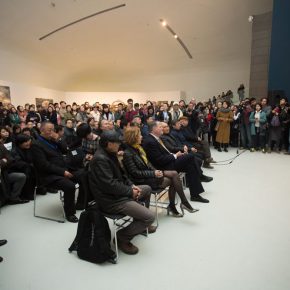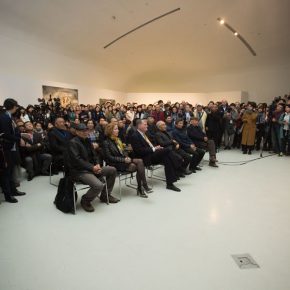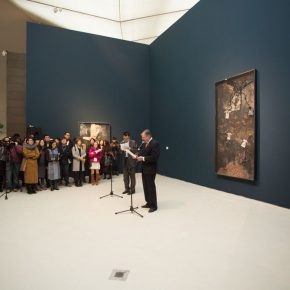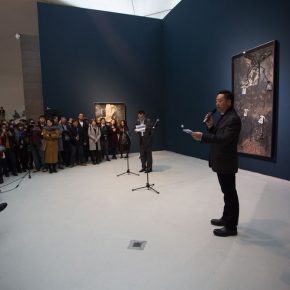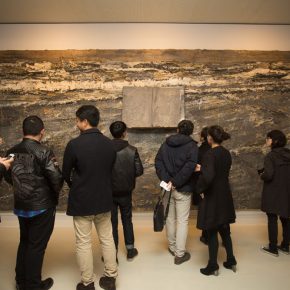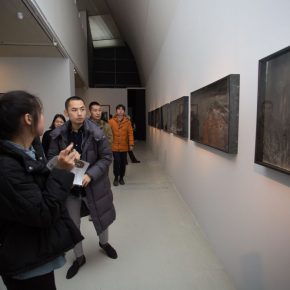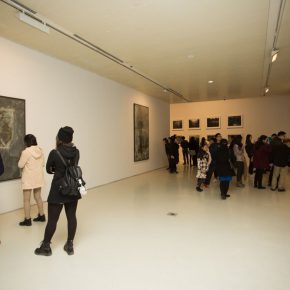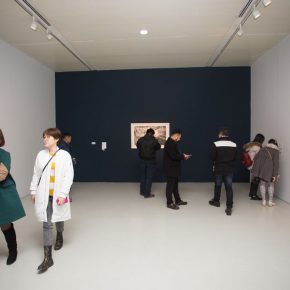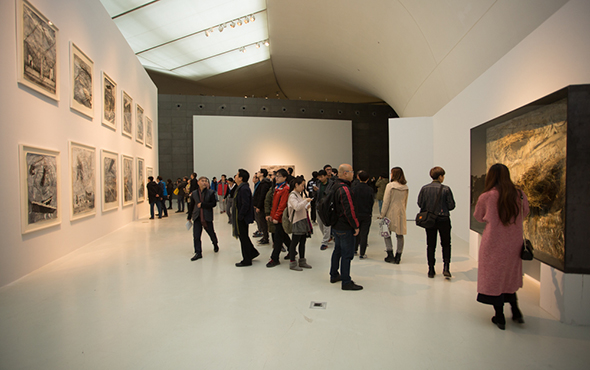
November 19, 2016, the German artist Anselm Kiefer’s first exhibition in China, which is entitled as "Kiefer in China" was scheduled to open in the Art Museum of the Central Academy of Fine Arts. Though "Kiefer in China" was opened, Kiefer himself was not in China, instead he issued a statement in Germany calling for the cancellation of his exhibition in China. This triggered a fierce debate among media reports and discussions on social platforms, two days before the exhibition was unveiled. Is an exhibition legal and reasonable if the living artist does not agree to display it? Does it hurt the artist's legitimate rights and interests? How can public art museums judge and weigh the identity and role of themselves in the exhibition with the intervention of other social institutions?
The opinions around this exhibition has focused on the intricate relationship among laws, morality, international practice and business operations. From a legal point of view, China's "Copyright Law" provides that: the copyright owner's right should include the exhibiting rights, that is, the right of the public display of artworks, photographic originals or copies; the transfer of the ownership of the original artworks should not be taken as the transfer of copyright of the artwork, but the right to exhibit the original works of art should be owned by the proprietor of the original works. Anselm Kiefer is a German artist, from the provisions of the German "Copyright Law": the right to show refers to the right to showcase works that have not been published yet or original photographic works or its copies for the audience to appreciate; in this case the possession of the original work has been an transferred, although the original artworks or photographic work have not been published yet, the owner of these works has the right to exhibit them publicly unless the owner of the domain has the copyright explicitly which prohibits the act in the process of transferring the work.
"Kiefer in China" took place in China, apparently it was applicable to Chinese "Copyright Law." Artist Kiefer is certainly the copyright owner of his work but the ownership of the work does not belong to the artist himself. They were from the collections of the German MAP Collection and the LUDWIG Museum Koblenz. In this case, the statement issued by the artist and the gallery that represents him pointed out that the exhibition was against the wishes of the artist, which is also contrary to the conventional practice that a living artist is involved in his international exhibitions but they did not put forward that this exhibition endangered the legitimate right and interest of the artist.
Law, is certainly not the only criterion for guiding social behavior. Morals, emotions, and conventions steer our attitudes and behavior towards decisions. But how to choose different criteria when facing conflict? Law is the common spiritual contract reached by the public for an event, and it is in the pursuit of maximizing the public interest. When the law and emotions conflict with each other, there is no doubt that the law comes first. Therefore, in the previous statement made by the Art Museum of the Central Academy of Fine Arts, all the exhibits in"Kiefer in China" have been authorized by collectors and owners of the collections, they claimed the behavior is that the proprietor of these works advocates his "exhibition right". As to whether the exhibition "Kiefer in China" violates the "name right" in civil law is controversial and whether the exhibition in the follow-up implementation of copyright infringement "copy right" and "information network communication rights", this should be determined by the following specific circumstances.
In agreeing to this legal fact, on the basis of which further discussions could be conducted. After years of development, art museums have produced a set of exhibition operation mechanisms which includes the cooperation and interests among artists, art museums, collectors, curators, critics, media and the public. An art museum, especially an academic art museum is an academic field, but also a public space in line with public interest and demands, but in the current art ecology, thus their intersection with the market and commercial operations is inevitable, after all, the market is also an important force to promote academic development, and the art market is a discipline in the academy of fine arts. What kind of status and attitude should an art museum maintain when cooperating with or colliding with market institutions? What kind of ethical conduct should an art museum have in the face of intrigue, black-box operations, or even an artist that is kidnapped by art galleries? Art Ecology is originally a linkage system, each exhibition, each discussion, each essay will stimulate fluctuations whether large or small in the whole system, then how does the art museum make its academic voice on the present issue of commercial disputes? This is the topic this exhibition has been faced with, but it also leads to various discussions by the public.
As an important window linking the art and the public, the premier identity and function of an art museum is to put on qualified exhibitions. Kiefer is one of the most important representatives of German Neo-Expressionism. His art has strong stylistic features and visual tensions, but he is not a purely visual artist. His reflections on history and culture remain important themes of his creations, how to face the history of the Third Reich after the World War II, was the spiritual dilemma faced by German artists. Kiefer confronted this period of history with his unique art style and attitude when German society was still ambiguous about the Nazis. During the World War II, almost all modern art was defined as "decadent art", realistic style painting after the war was also seen as tainted art by Hitler, realistic painting can reproduce the memory of history, which was the fact that Germany was then reluctant to face the past. Therefore abstract paintings with pure forms became the choice of West German artists. In the context of the double absence of historical memory and image, Kiefer took a path of "piercing the truth insistently". Under the influence of Beuys, he injected realistic attention into the performance of war history, to create a tragic color, and set off on the return of the discussion of painting, breaking through the development of USA pop art, minimalism and abstract art dominated. At the same time, Kiefer did not intentionally distort from the American abstract expressionism that prevailed at that time, so as to demonstrate the independence of his German art. He was quite sure of the strong tension in Pollock's art and pursued a free state in his creation. Meanwhile, he also expands the use of the possibility of materials, wheat straw, sand, plastic, stone, branches, tiles, concrete, etc. are the visual representations used in his images.
Moreover, Kiefer is also a featured representative for Chinese contemporary art, since he has influenced the creation of a large number of Chinese contemporary artists in the 85’ New Wave period until now. For many years, Fan Di’an, the President of the Central Academy of Fine Arts and his German friends have been discussing how to present a large-scale exhibition of Kiefer in China, especially with the involvement of the artist to reflect his thinking. The exhibition first came to China, displaying more than 80 works, spanning painting, sculpture, installation, videos, all of which Kiefer has created since the 1980s, although these works could not be deemed as the most representative works by Anselm Kiefer, but rather a complete series that the exhibition presented of Kiefer’s artistic style through so many years, for the Chinese public, this was also a very rare opportunity to confront with the artist’s work.
"Kiefer in China" was successfully opened, which triggered a series of issues worthy of further thought. In recent years, exhibitions by international masters were nothing new, but each exhibition can arouse fierce discussion, what kind of healthy mode could the exhibitions have if they enter China? After China becomes more and more important in the international art arena, should there be a more harmonious art operation mechanism? What kind of copyright does the artist have for his work? What kind of follow-up rights agreement should the artist have with the collector when the work was transferred? Should any art exhibitions be held with the artist's own consent or authorization in advance? In the whole art ecology, how should the museum maintain their academic and independent features? This is a problem for digestion in the art world, but there are also laws involved in related discussions. It is hoped that "Kiefer in China" exhibition is a good opportunity to promote the development of Chinese art ecology in a more healthy direction.
Text by Zhang Wenzhi, translated and edited by Sue/CAFA ART INFO
Photo by Yang Yanyuan/CAFA ART INFO








